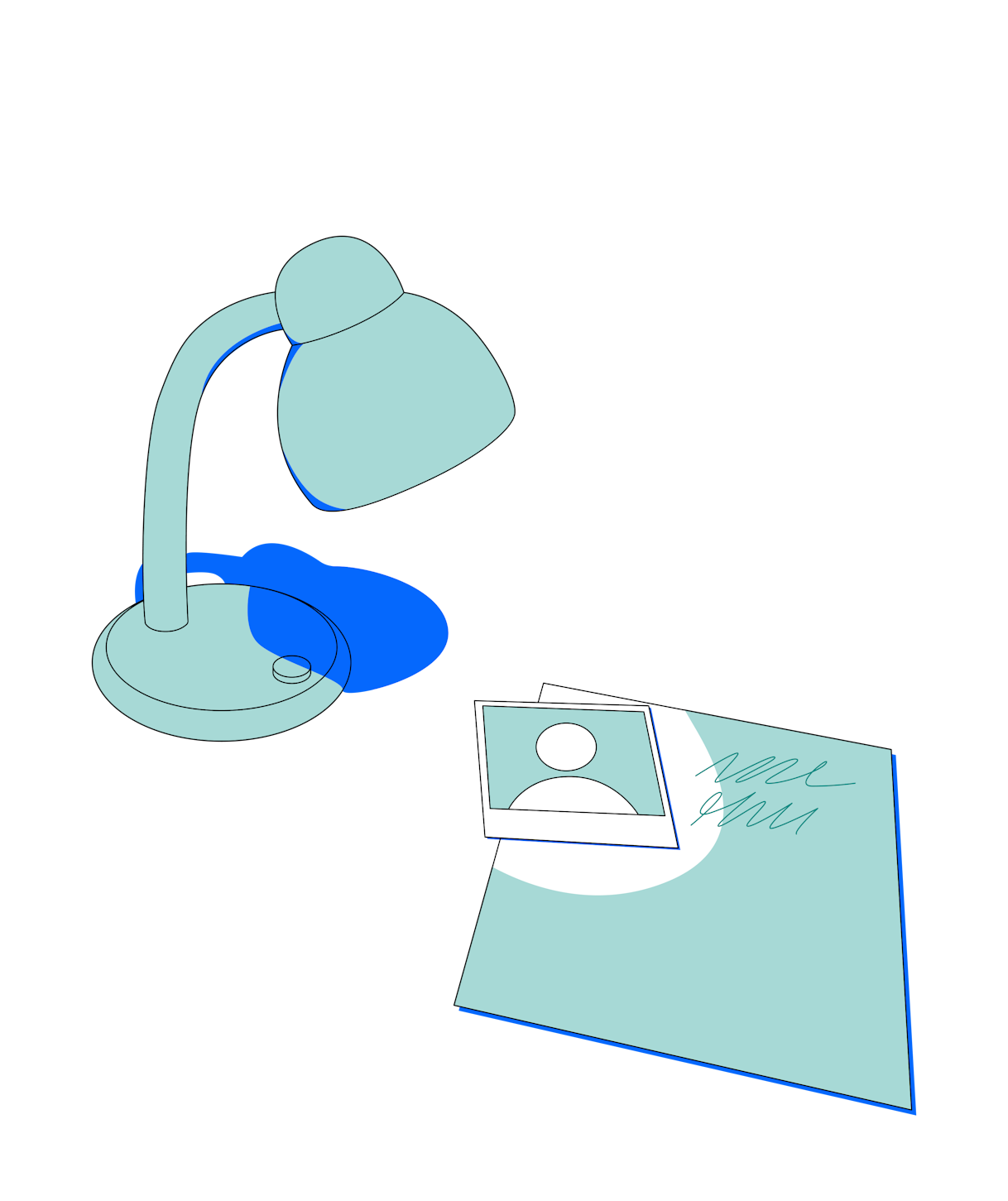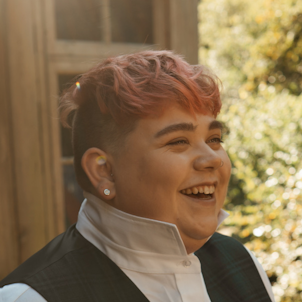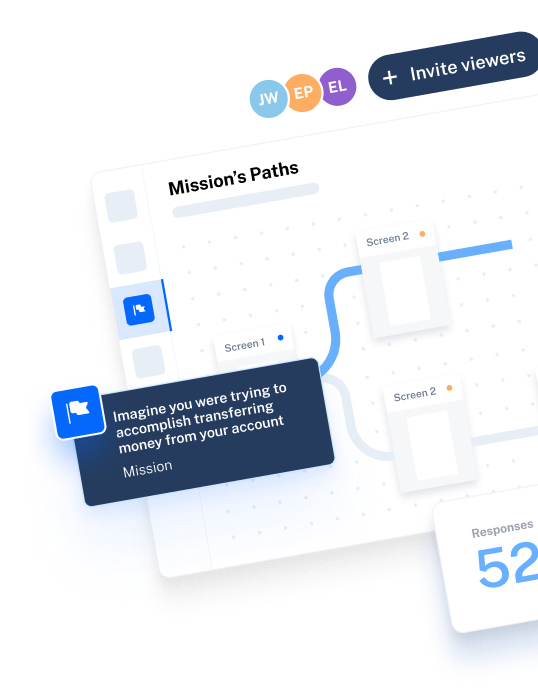There’s nothing quite like talking to your users one-on-one, but sometimes the standard approach to user interviews isn’t enough to get you the insights you need. An in-depth approach is vital for more in-depth feedback.
In-depth interviews take qualitative research to the next level, letting you home in on the topics crucial for your UX research.
When conducting in-depth interviews, your focus is to always bring the conversation back to a specific, focused topic, or answering a particular question to ensure you get the insights you came for.
To give you the low-down on in-depth interviews, we conducted one of our own with Russ Brown, Senior Product Designer at Chameleon. Russ spends a lot of time conducting interviews to inform the product design process at Chameleon, and kindly agreed to share his learnings from years in the industry.
In this expert-led article, we cover how to recruit for, conduct, and analyze in-depth interviews to maximize your qualitative research insights.The first question we discussed is—what are, exactly, in-depth interviews?
What are in-depth interviews?
When researching in-depth interviews, you’ll find some varying definitions.
Some sources place in-depth interviews between unstructured and semi-structured interviews; others define them as thorough research conversations that can be structured, unstructured, and everything in between. Put simply, there’s no universal definition.
To bring some clarity to the topic, we turned to Russ for his thoughts, drawing on his extensive experience designing products at Chameleon and beyond.
He defines in-depth interviews as a type of highly-structured user interview revolving around a specific UX research topic and question. The interviewer should always steer participants and questions back to the specific topic, to gain laser-focused, contextual, descriptive insights.
To conduct in-depth interviews, you need to be super strict about what you’re interested in—you just won’t give up on a topic. In-depth interviews have a lot of structure because you know the exact areas and points that you’re interested in.
Russ Brown
Senior Product Designer at Chameleon
Share
In-depth interviews vs. user interviews: What’s the difference?
Where standard user interviews can dip into other focus areas, cover a range of questions, or take an unexpected turn—in-depth interviews are focused on diving as deep as possible into one particular user research question.
Russ highlights a few key differences between in-depth interviews and regular user interviews are:
- Structure: In-depth interviews should always be structured with a list of questions you have prepared for your respondent. User interviews, on the other hand, can be structured, semi-structured, and unstructured depending on the goal of your study.
- Focus: With in-depth interviews, you’re focused on a specific topic and set of questions connected to your UX research objective. Regular user interviews can cover a wider range of topics and questions and even branch into new, unforeseen topics depending on the interviewer and participant
- Depth of insights: Both types of interviews help you get descriptive and contextual feedback. However, in-depth interviews help you focus on a single response and explore it further—giving you deeper insights than with regular user interviews.
Russ shares his experience with both:
“At Chameleon, we’ve done surface calls where we just talk about what's on the top of the participant’s mind. In those interviews, I’m more interested in their general experience at Chameleon.
“But let’s say I’m doing an interview on Chameleon Customer Service and Support (CSS). That’s all I want to hear about. I’ll keep pressing that issue. Even if the participant tries to go down another path, I’ll bring them back to the matter at hand.”
In-depth interviews: Advantages vs. disadvantages
While in-depth interviews can help you get highly contextual insights for your research study, this qualitative research method also has some drawbacks to consider.
Advantages of in-depth interviews | Disadvantages of in-depth interviews |
|---|---|
Provide deeper, highly relevant, and focused insights | Limited flexibility can deter spontaneous insights from emerging |
Require fewer research participants and sample size | Require a highly skilled interviewer to establish rapport and steer the session effectively |
Are efficient due to their predetermined structure | Require highly-specific target users, making it difficult to find participants |
Ensure consistency in qualitative data collection and analysis by asking a set of users the same question |
How to recruit participants for in-depth interviews
To get focused insights on your research topic through in-depth interviews, you need to find participants who match specific criteria relevant to your UX research goals.
Just like with any type of user recruitment, make sure to have your UX research objectives and user personas close by. Both objectives and personas will give you a clear picture of the type of user you’re looking for, while also helping you clearly define your research criteria and screener questions.
When recruiting participants for in-depth interviews, aim to be as selective as possible. You’re looking for participants to answer very specific questions, so most users won’t qualify. Here’s some typical steps you can follow to find the right participants:
- Establish recruitment criteria: Define a specific set of characteristics that qualify users as potential participants. Your recruitment criteria can include demographic characteristics alongside usage patterns and user habits.
- Set up a screener survey or questionnaire: Create a list of simple, close-ended questions based on your established recruitment criteria. A screener survey, like this one for researching mobile device usage, helps you qualify and disqualify potential participants for your in-depth interview study.
- Choose recruitment channels: These are specific places where you can find participants for your study. When recruiting for in-depth interviews, you can leverage in-product recruitment, research panels, participant recruitment platforms, targeted social media ads, emails, and newsletters.
- Screen and select participants: Reach out to potential participants, send over your survey, and analyze the results as they come in. Create a scoring system based on how well participants match your criteria and select your participants accordingly.
To find, screen, and recruit specific users, Russ often opts for in-app messages where potential participants can see them:
“We have cards embedded on the homepage with a call out to talk to the design team. We’ve also put an embeddable around the CSS section, right where users would see it. This works like a screener. Users are only going to see it if they’re there and they have an interest in using it. The embeddable takes you to a modal with a Calendly link where you can book a call. It’s super easy and super quick.”
🔍 Haven’t yet found your participants? Maze gives you access to a powerful Panel, letting you filter your search and recruit your ideal participant from a pool of 3 million participants across 150+ countries.
How many participants and in-depth interviews are enough?
A key consideration for recruitment is how many users you need for your study. Since in-depth interviews require participants to meet highly-specific criteria, and can gather rich insights from a single participant, you can successfully conduct in-depth interviews with a range of four to six users. Russ shares how Chameleon approaches this consideration.
Our sweet spot is as many interview as we can get with the time that we have. If we could book ten interviews for a week, we would—but we typically don’t get or need that many at scale. Four to six is enough for getting insights, especially if you have a tightly focused persona.
Russ Brown
Senior Product Designer at Chameleon
Share
Conducting in-depth interviews
The actual process of conducting in-depth interviews follows the same steps as conducting any user interviews.
- Set your goals
- Prepare your interview questions
- Recruit participants
- Introductions and build rapport
- Conduct the interview
- Debrief participants
The key difference is that it requires you as an interviewer to constantly bring participants back to the topic at hand. In this sense, learning how to conduct in-depth interviews is more about learning how to adapt your normal interview process to be laser-focused towards your specific goal and questions.
💡 Just want the step-by-step to user interviews?
Learn more about conducting user interviews in our comprehensive guide. Discover six essential steps and best practices to make the most of your users’ time and responses.
Let’s go through the standard user interview steps and what to add when you’re looking to dig deeper.
Given the sweet spot for user interviews is around 30 minutes to an hour, you have little time to waste when it comes to gathering feedback on your specific UX research topic. Russ notes: “People talking off-topic or providing additional information is no problem. But you still need to bring them back on track if they drift around. Topic detours are fine for a lot of interviews—but not when you're going in-depth.”
The prep work is also imperative—before starting a session, make sure you have a list of open-ended questions for your topic and two to three follow-up questions. After making introductions and building rapport in the first few minutes of your interview, swiftly move on to asking participants the questions from your list.
Throughout the session, your participant may drift away from the topic—or even go off on a different tangent. Since you’re after specific feedback, the key to successful in-depth interviews is to gently bring them back to the precise topic at hand. Actively listen to your participant’s responses, acknowledge them, and politely re-introduce your question and interest.
“Just make sure you’re bringing them back in an amiable and nice way, otherwise it could be perceived as rude and shutting them down,” shares Russ. “Keep the conversation friendly, let them know you value their opinions, and then return the conversation to the topic you're interested in.”
How to analyze in-depth interviews
Even with top-tier responses on your most pressing topic, you still need to make sense of your data before you can extract those game-changing insights.
Thematic analysis is a great way to analyze your user interviews, turning complex and diverse data into clear, actionable insights. Here’s a brief overview of the key steps of this qualitative research method:
- Collect and read through your data: Familiarize yourself with your participant’s responses. Listen to the interview sessions, read the transcripts, or review summaries and reports, and make notes of what stands out.
- Generate codes: Use codes to categorize information and summarize points of interest in a few words. For example, you can create codes like ‘design,’ ‘integrations,’ and more to document what users have to say.
- Sort codes into themes: Identify overarching themes and patterns repeating themselves throughout your data. These recurring findings will form your insights. For example, one potential theme could be ‘the importance of seamless integrations with other tools’.
In-depth interviews require a thorough approach to data analysis and reporting to ensure you’re familiar with feedback, and not missing out on potential insights. Cognitive biases mean it’s easy to think participants said one thing during an interview, only to revisit the transcript or recording to find they meant something else entirely.
It’s incredibly common for our brains to take shortcuts. You think you know what someone means or wants to say. Then, you watch the interview a couple of times and find that’s not the case. Transcripts are super useful here too, because they spell it out for you.
Russ Brown
Senior Product Designer at Chameleon
Share
In-depth interview analysis is a lengthy process. You really need to go through your interview transcript thoroughly.
“There’s much more focus on detail with in-depth interviews. After all, you’ve been speaking about one topic for 30 minutes. More detail means a lot more to analyze when participants go in-depth with their experience using a product, adds Russ.
“Get granular and go in sentence by sentence with both the recording and the transcript. Typically, you’ll need to reread and rewatch sections two to three times.”
3 Expert tips for in-depth interviews
Getting clear on recruitment, conducting sessions, and analyzing in-depth interviews will serve as your basis for getting insights. But if you want to make the process as smooth and effective as possible, you’ll need some expert tips to get ahead.
In-depth interviews are all about going the extra mile to get super helpful insights on super specific topics. You’re digging deep, so you’ll need a set of specialized strategies to ensure success.
Here are three pointers that will help you make the most of your in-depth interview sessions.
1. Lead the call with confidence
Showing confidence throughout the session is one of the most important aspects of managing your interview study and getting insights.
“It’s about being confident on the call and reassuring the participant where the conversation is going. You want to be amenable and take initiative”, says Russ. “It’s always good to build rapport with some brief chit-chat in the beginning. Once you get into the topic at hand, many people will naturally adapt to it and go your way.”
During in-depth interviews, your participants will rarely stumble into addressing the topics you want to hear. Instead, you need to take control of the conversation with confidence to get the insights you’re after.
Right from the start, build rapport with your participants, let them know there’s no wrong answers, and tell them what you’re interested in learning about with open-ended user interview questions.
2. Encourage participants to expand on their thoughts
Not all participants will naturally go into depth when answering questions. While some might offer detailed opinions, others might be nervous to share their thoughts. Russ emphasizes the power of encouragement to help participants elaborate
“Some people’s natural inclination is not to talk, and yet that’s exactly what you want for the session. In many cases, you’ll need to fight against that natural inclination by making the interview inviting and offering constant reassurance.
“As an interviewer, I'm trying to not do a lot of talking and actively listen instead. I’ll offer encouragement through interviews with my body language by doing things like nodding. The trick is to give people enough encouragement and space to keep talking about the subject.”
By actively listening to your participants, you’re creating a space where they can freely share their opinions. Leaving silence between answers encourages participants to elaborate and organically offer deeper responses to your in-depth interview questions.
3. Invite a moderator to in-depth interviews
As an interviewer, you’re doing multiple things at once. Asking questions, actively listening, and following your user research discussion guide are just some of the tasks on your to-do list. That makes it easy to become overwhelmed or forget important details throughout the conversation.
“Having a moderator present is key,” explains Russ. “They can easily cover little things like hitting record and more, so you can focus on asking questions and getting detailed answers.”
A user interview moderator can support you during the interview by conducting multiple tasks such as:
- Ensuring the session is being recorded
- Remembering to gather consent
- Building rapport with the participant
- Highlighting follow-up questions
- Managing time and transcribing notes
- Passing on information about follow-ups or incentives
Put simply, a user interview moderator acts as a safety net during your interview—catching anything you miss and enabling you to focus on the interview at hand.
Conduct in-depth interviews with Maze
In-depth interviews = in-depth insights. They’re the ideal research method for gaining granular understanding of a specific product, feature, or experience. They take time, effort, skill, and experience—but the help of a comprehensive interview solution makes the process a lot simpler.
With Maze Interviews Studies, you can easily schedule and conduct interview sessions, then instantly analyze responses for overarching themes and insights. The built-in video conferencing solution makes conducting user interviews a breeze for you and your interviewees. From recruitment to analysis, moderated research has never been so easy.
Let’s end with a final tip from Russ—one we’re huge advocates of here at Maze:
“If you’ve done an interview and shipped something over a period of two to three months, it’s a great idea to go back to the same group and address the problem again. Talk to them and see whether you’ve successfully improved the feature you were working on.”
Research, design, develop, and iterate—that’s how user research should be.






